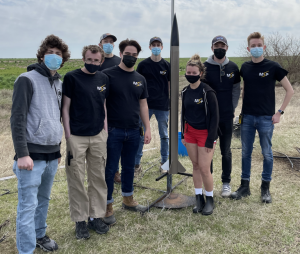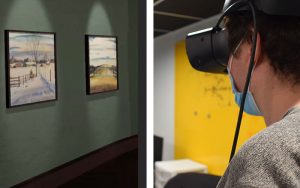
May 3, 2021
Mizzou Space Program launches into Argonia Cup
The small village of Argonia, Kansas, is probably not your first choice of destinations for a spring break trip. However, eight members of the Mizzou Space Program (MSP) traveled there to participate in a rocketry contest this year.

April 28, 2021
Optimizing local food systems in cities
Feeding a growing urbanized U.S. population which also wants increased sustainability and locally sourced food presents a major challenge. One part of the solution could be to optimize food production in urban areas, according to research performed by a team including Associate Professor Ron McGarvey.

April 27, 2021
Mizzou Engineer to Present at Posters on the Hill
A Mizzou Engineer will be among 60 students presenting this week at Posters on the Hill, a prestigious Washington D.C.-based event that showcases top undergraduate researchers in the country. Rebecca Shyu, who is majoring in computer science, presents virtually on Wednesday, April 28.

April 22, 2021
Undergraduate Honors Research Fellowship Project ‘Fantastic Fit’ for IT Student
For Andrew Murphy, receiving an Undergraduate Honors Research Fellowship from Mizzou Engineering was an ideal way to finish out his senior year. The fellowship, which comes with a stipend, is designed to get undergraduates involved in engineering research. Murphy worked with Assistant Teaching Professor Fang Wang to develop a web portal and companion mobile app.

April 20, 2021
Meet Dong Xu
Computational capabilities, medical breakthroughs and biological advancements are accelerating at lightning speeds. A Mizzou Engineering researcher is keeping up. Meet Dong Xu, a bioinformatics expert whose fingerprints can be seen across Mizzou Engineering and the MU campus.

April 15, 2021
Yan honored with UM System Presidential Faculty Award
Mizzou Engineering’s Zheng Yan has received the 2021 UM System Presidential Faculty Award for Career Excellence Early Career – STEM. Yan is an assistant professor, holding a joint appointment between the Department of Biological, Biomedical and Chemical Engineering, and the Department of Mechanical & Aerospace Engineering.

April 14, 2021
Going up with air taxi service
Flying cars are closer than ever to being a reality. But with this new technology comes operational questions that Suchithra Rajendran is attempting to answer.

April 13, 2021
Hunt selected as 2021 Kemper Fellow
Heather K. Hunt, associate professor in Biomedical, Biological & Chemical Engineering (BBCE) and faculty fellow for strategic initiatives for the UM System Office of eLearning, received a 2021 William T. Kemper Fellow award on Wednesday, April 7.

April 12, 2021
IT Students Create Virtual Gallery for Museum Collection
Mizzou Engineering students are putting the final touches on an interactive art exhibit that will allow visitors to view paintings without ever stepping inside a museum. The exhibit is being created digitally for a virtual reality (VR) experience.

April 9, 2021
Robotics Expert: Gen Z Will Usher in Era of Advanced Robots
Today’s robots are good at performing single tasks. You can buy an autonomous robot, for instance, to vacuum your house. A true single helper robot that can vacuum, cook and wash the dishes? That could be a while, but Dale Musser believes Generation Z will usher in the era of advanced robotics.